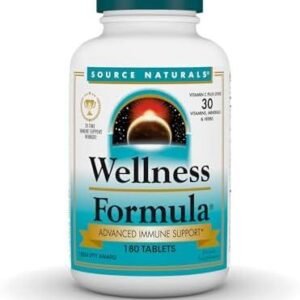In the realm of sports nutrition, few supplements have garnered as much attention and scientific scrutiny as whey protein. As athletes and fitness enthusiasts continually seek effective strategies to enhance their performance and recovery, the role of whey protein has emerged as a pivotal factor in promoting muscle growth and facilitating recovery post-exercise. Derived from milk during the cheese-making process, whey protein is rich in essential amino acids, particularly leucine, which plays a critical role in stimulating muscle protein synthesis. This article aims to analyze the biochemical mechanisms behind whey protein’s effectiveness, explore its implications for muscle hypertrophy, and examine the nuances of its impact on recovery processes. By dissecting existing research and expert insights, we will provide a comprehensive overview of whey protein’s significance in the contemporary landscape of fitness and athletic performance.
Table of Contents
- Understanding the Role of Whey Protein in Muscle Protein Synthesis
- Mechanisms of Muscle Recovery Enhanced by Whey Protein
- Optimal Timing and Dosage for Maximum Muscle Growth
- Comparative Analysis of Whey Protein Types and Their Effectiveness
- To Conclude
Understanding the Role of Whey Protein in Muscle Protein Synthesis
Whey protein is a complete protein source, meaning it contains all nine essential amino acids that play a crucial role in muscle protein synthesis (MPS). Post-exercise, the body enters a state of recovery where it needs to repair muscle tissue that has been broken down during physical activity. By providing a quick and efficient source of protein, whey facilitates the MPS process by ensuring an ample supply of amino acids is available. This action is largely attributed to its high content of branched-chain amino acids (BCAAs), particularly leucine, which is instrumental in triggering the signaling pathways responsible for protein synthesis.
Integrating whey protein into a post-workout regimen can significantly enhance recovery and muscle growth. Research indicates that consuming whey within 30 minutes after exercise can optimize the benefits of MPS, taking advantage of the body’s heightened sensitivity to nutritional intake during this window. Additionally, whey protein’s rapid absorption rate ensures that amino acids flood the bloodstream promptly, promoting recovery and muscle adaptation. The following factors further highlight whey protein’s effectiveness:
- Fast absorption: Whey protein digests quickly, making it ideal for post-workout nutrition.
- High leucine content: Critical for stimulating muscle protein synthesis.
- Supports recovery: Reduces muscle soreness and repairs damaged tissues.
For those aiming to optimize their muscle gains, it is beneficial to understand the timing and method of whey consumption. Below is a concise overview of the recommended strategies:
| Timing | Recommended Serving | Purpose |
|---|---|---|
| Immediately Post-Workout | 20-30g | Kickstart muscle recovery |
| Pre-Bedtime | 20g | Support overnight recovery |
| Between Meals | 10-20g | Maintain positive nitrogen balance |
Mechanisms of Muscle Recovery Enhanced by Whey Protein
Whey protein plays a significant role in the muscle recovery process due to its rich composition of essential amino acids, particularly branched-chain amino acids (BCAAs). These amino acids are crucial for muscle repair and growth, as they stimulate protein synthesis while reducing muscle soreness and damage post-exercise. When consumed after a workout, whey protein delivers a rapid influx of amino acids into the bloodstream, which is vital for:
- Muscle Protein Synthesis: Enhances the rebuilding process of muscle fibers.
- Reduced Muscle Breakdown: Inhibits the activity of protein-degrading pathways.
- Improved Recovery Times: Speeds up the overall recovery period, allowing for quicker return to training.
Moreover, whey protein not only supports the physiological aspects of recovery but also contributes to the metabolic health of athletes. Its rich cysteine content aids in the production of glutathione, a critical antioxidant that helps combat oxidative stress induced by intense workouts. This dual role of muscle repair and oxidative defense can be summarized as follows:
| Benefit | Mechanism |
|---|---|
| Enhanced Muscle Repair | Amino acid profile promotes protein synthesis. |
| Reduced Soreness | BCAAs lower levels of muscle damage after exercise. |
| Oxidative Stress Reduction | Boosts antioxidant defenses through glutathione production. |
Optimal Timing and Dosage for Maximum Muscle Growth
When it comes to maximizing muscle growth, the timing and dosage of whey protein intake play pivotal roles. Research suggests that consuming whey protein within 30 minutes post-workout is ideal due to the body’s heightened state of insulin sensitivity and protein synthesis at this time. This window allows for optimal nutrient absorption, ensuring that your muscles receive the necessary building blocks for recovery and growth. Moreover, for those engaged in intense training, spreading protein intake throughout the day can promote an anabolic environment. Aim for a total of 1.6 to 2.2 grams of protein per kilogram of body weight daily, tailored to your individual energy demands and training volume.
Deciding on the exact dosage can be flexible, but a common effective serving integrates around 20 to 25 grams of whey protein per intake. This amount has been shown to stimulate muscle protein synthesis effectively. To further optimize results, consider incorporating whey protein into meals or snacks throughout the day. An ideal approach might include:
- Post-Workout Shake: 20-25 grams immediately after training
- Breakfast Addition: 20 grams stirred into oatmeal or smoothies
- Mid-Afternoon Snack: 20 grams mixed with yogurt or in a protein bar
| Timing | Protein Dosage | Purpose |
|---|---|---|
| Post-Workout | 20-25g | Muscle Recovery |
| Breakfast | 20g | Muscle Maintenance |
| Snack | 20g | Prevent Muscle Breakdown |
Comparative Analysis of Whey Protein Types and Their Effectiveness
When evaluating the effectiveness of whey protein supplements, it’s essential to consider the different types available on the market. The three primary forms are Whey Protein Concentrate (WPC), Whey Protein Isolate (WPI), and Whey Protein Hydrolysate (WPH). Each variant presents unique benefits and nutritional profiles that can influence muscle growth and recovery. For instance, WPC contains approximately 70-80% protein and retains more beneficial nutrients such as fats and carbohydrates, which can enhance the overall anabolic environment in the body. Conversely, WPI undergoes more rigorous processing to achieve a higher protein concentration of about 90% or more, making it ideal for those seeking a leaner option with minimal lactose. Meanwhile, WPH is pre-digested, facilitating faster absorption, which is particularly advantageous post-workout for rapid recovery.
To illustrate the differences in these protein types effectively, the following table summarizes key characteristics:
| Protein Type | Protein Content | Processing Level | Best For |
|---|---|---|---|
| Whey Protein Concentrate | 70-80% | Less processed | General fitness enthusiasts |
| Whey Protein Isolate | 90%+ | Highly processed | Weight loss and lactose-intolerant individuals |
| Whey Protein Hydrolysate | Varies | Predigested | Post-workout recovery |
The selection of whey protein should reflect individual health goals and dietary needs. For those seeking a versatile protein with additional nutrients, WPC may be the best choice. However, athletes or individuals on a strict diet might prefer WPI for its high protein content and low fat. Meanwhile, WPH serves as an excellent option for those needing immediate protein uptake after intense workouts. Understanding these distinctions can lead to more informed decisions about supplementation and ultimately enhance muscle recovery and growth.
To Conclude
the role of whey protein in muscle growth and recovery is underscored by a substantial body of scientific evidence that highlights its efficacy as a supplementary tool for both athletes and fitness enthusiasts. The bioavailability and rapid digestion of whey protein make it an exemplary source of essential amino acids, which are crucial for the synthesis of muscle tissue and the repair of exercise-induced damage. Furthermore, the unique properties of whey, particularly its high leucine content, position it as a potent stimulator of muscle protein synthesis.
As we delve deeper into the relationship between nutrition and performance, it becomes evident that while protein supplementation can significantly enhance recovery and muscle gains, it must be integrated into a holistic approach that includes adequate training, overall dietary balance, and individual lifestyle considerations. Future research will likely continue to expand our understanding of the optimal timing, dosage, and combinations of whey protein with other nutrients, further refining its application in various athletic contexts.
Ultimately, whey protein stands as more than just a convenient supplement; it embodies a cornerstone of nutritional strategy that, when leveraged effectively, can propel individuals toward their fitness goals. For those seeking to maximize their muscle growth and recovery processes, the thoughtful incorporation of whey protein into their regimen could prove to be a pivotal decision in their journey toward athletic excellence.





